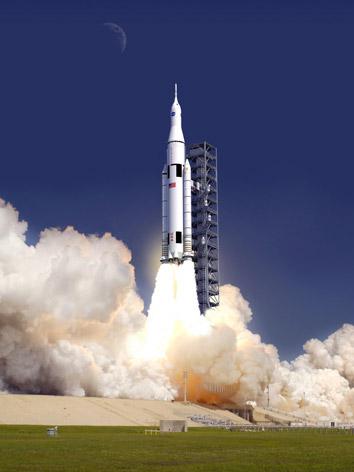Having just praised President Obama and torn apart the House GOP in a previous post, let me flip that: I’m now going to condemn the president and praise the House (more or less).
Last week, the United Stated House of Representatives passed the Fiscal Year 2015 Commerce-Justice-Science appropriations bill, which includes funding for NASA. Overall, it’s not so bad—I’ve discussed it before, and you can go read posts at the Planetary Society and Space Policy Online for details. The bill report gives details on the money allocated.
Mind you, this is not the final budget for NASA! Every year the White House issues a budget request for NASA, and then the House puts together its version. That goes to the Senate, changes are made, the two versions are debated, compromises reached, and then the final version is sent to the president to sign. This new House budget is just one step in that process.
What’s good about the House budget is that it puts back in a lot of money the White House took out, for reasons that are still somewhat mysterious, including devastating cuts to planetary exploration requested by the president. This has been an ongoing battle, and I really wish the White House would stop screwing around trying to cut one of NASA’s most successful and highly visible programs! Happily, a campaign run by the Planetary Society has been very helpful in raising awareness in Congress over the need for planetary missions.
The bill specifically outlays $100 million for the development of a mission to the icy moon Europa, which is simply fantastic. It’ll cost a lot more than that in total, but that’s a darn good first step. Europa is a very, very desirable target for an outer planets mission, since it has a vast ocean of liquid water under its icy surface. What treasures await beneath the surface for us to discover?
Interestingly, the House budget restores funding for SOFIA, an infrared telescope flown on an airplane, money that had been inexplicably taken away by the White House budget. The report on the bill is pretty clear about this:
The Committee does not accept NASA’s request to terminate support for the Stratospheric Observatory for Infrared Astronomy (SOFIA), a project that is currently producing good science and has not been proposed for termination by NASA’s internal or external scientific review boards. Instead, the recommendation provides $70,000,000 for SOFIA, which should be sufficient to support the aircraft’s fixed costs (flight crews, required maintenance, etc.) as well as a base level of scientific observations.
That’s pretty cool. Nice timing, too, since NASA is testing a new instrument for SOFIA that will improve its ability to take spectra and investigate all manners of celestial objects.
Speaking of infrared telescopes, I didn’t see anything specific about Spitzer, which is in danger of being canceled. Hopefully I’ll be hearing more about that soon.
I’m happy to see an additional $15 million toward education and public outreach in the budget, which also had been cut by the White House. That whole thing from the President was a total mess, bordering on lunacy; instead of doing education through the various missions, as had been done for years, the White House wanted to combine it all and outsource it to other groups. That would have been extremely harmful to NASA’s E/PO effort, losing many years of wisdom and experience gathered by many dozens of people. I’m glad money has been restored to this.

Artwork depicting a launch of the SLS.
Art by NASA
Not that I’m thrilled with all of the budget bill. For example, there’s an increase in the budget for the Space Launch System, a next-generation heavy-lift rocket. I’m not a big fan of this; NASA doesn’t have the best track record for developing that sort of thing. (Constellation, the last such project, was way behind schedule and over budget, so the president canceled it.)
Also, NASA doesn’t have a clear plan to use such a rocket (besides a vague and mostly unloved asteroid retrieval mission), which is not a good sign; unless extremely clear goals are listed, big NASA missions tend to get bloated, as the Space Station and Space Shuttle did. Despite this, SLS has become a pet project for many legislators in Congress (which may have a lot to do with NASA centers being in their districts).
I’d very much like to see a bold, enumerated list of targets for the next 15-20 years first, and then have them design the rocket to use for them next. What would it take to put a base on the Moon, to explore near-Earth asteroids, to launch way-station fuel/air/water depots into space for long-duration missions, to build a presence on Mars? Let’s figure that stuff out first, and hey, while we’re at it, let’s be bold.
Bold is what NASA does pretty well.
There are other details, but you can read about them at the links above. Overall, I think I’m happier with this version of the funding bill over what the president asked, with caveats for the specifics I outlined.
This bill will now go to the Senate, and we’ll see what happens there. This is just one step in a long process, and there’s a ways to go yet.